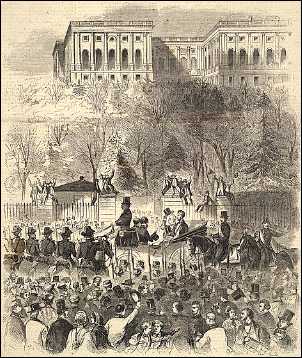Lincoln begins by making a joke that his speech
will be short, alluding to Harrison’s death due to the cold he caught after his
long inaugural address. He then goes on to mention sectionalism because the
south felt their personal securities, rights, economy, and peace were
endangered. Lincoln emphasizes that this divide in the nation is unprecedented
and says that he doesn’t plan to interfere slavery in the states where it
exists. He even says that he will maintain the rights of states stated in the
constitution. Since the issue of slavery was a major topic at the time, Lincoln
specifically mentions that he will uphold the clause in the constitution which
states "No person held to service or labor in one State, under the laws
thereof, escaping into another, shall in consequence of any law or regulation
therein be discharged from such service or labor, but shall be delivered up on
claim of the party to whom such service or labor may be due." While not
all states may like this, he feels that they should all respect it. Also, he
felt that the US republic came above states’ rights. He is trying to prove that
even if one state wants to secede that the republic will still be preserved. Lincoln
is saying that he will not let the south secede from the United States. The
Missouri compromise laid plans for whether new states would be slave or non-slave
states. However, Lincoln points out that the constitution does not mention what
should be done about new territories, so the Supreme Court will have to help.
Near the end, Lincoln states "This country, with its institutions, belongs to the people who inhabit it.
Whenever they shall grow weary of the existing Government, they can exercise
their constitutional right of amending it or their
revolutionary right to dismember or overthrow it." This comes as a
contradiction to his previous statement that he would preserve the union at all
costs. However, after this he says for his countrymen not to be impatient with
their government, to have faith, and to be friends not enemies.

Obama's first inaugural address:

Comments
Post a Comment